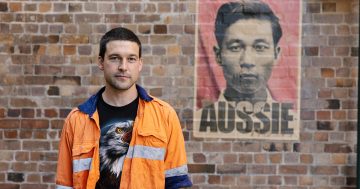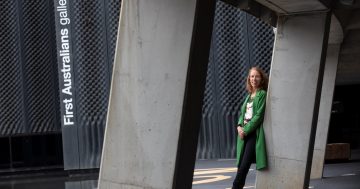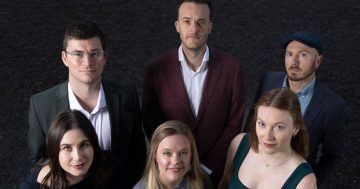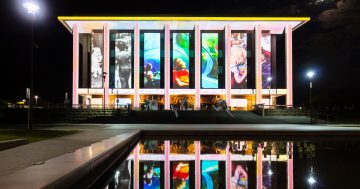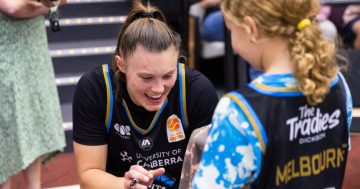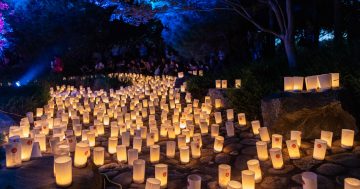History has shown us that ghosts and the supernatural seem to be commonplace and that a large percentage of people in the western world, indeed from all races and religions, not only believe in ghosts but have also experienced something that they believe is of a supernatural origin. Indeed, many people have reported the same supernatural occurrence happening at a specific place over a number of years thus legitimising their experiences, even though they have had no contact with others who may have seen, or heard, or experienced the same thing.
Can all these people be wrong? Are they deluded or deranged? Have they simply misinterpreted what they have experienced? In many cases, yes. And yet, there are still cases that defy explanation.
National Museum of Australia (Part 2/2)
So far in this book we have looked at numerous ghosts and hauntings and have seen that, in general, most ghosts and sightings appear to be figures trapped in a historical like replay of time. That is, they are stuck doing the same thing over and over forever, not interacting with the present day and quite often seeming to be attached to building, site or place. We have also seen poltergeist like activity which, although apparently intelligent, never appears to manifest itself in any human shape or form. We have also talked about shadowy forms and figures that occasionally appear to people in a variety of places and we have looked at other, strange and unexplainable anomalies that one could attribute to the supernatural or paranormal.
And yet here at the National Museum of Australia, a new building, the ghosts we have appear to act like intelligent, flesh and blood people tied to the current building and not the past, except for their clothes.
And so what are we to make of these ghosts? Can everyone who has seen them be hallucinating or simply misinterpreting what they see? We must remember that the museum is very, very modern, and certainly not a place that one would think of as being haunted and as such this alone should rule out suggestion.
However, it is a modern designed museum and its very layout is designed to heighten experiences and emotions for visitors. Could it be that the building design itself is responsible for these sightings? Could it be that somehow the walls and corridors have been accidentally laid out in a way that the visitor cannot help but misinterpret things they see? On the other hand, is it possible that this building amplifies whatever spirits that may have existed on the site previous to the museum, and as such they apparently exist in the present day format of the museum and not as a stone tape historical replay of years ago when the site was a hospital?
Of course, museums are places full of artefacts and items that once belong to now dead people. It is little wonder that they are often considered haunted. Not only that, they are quiet, reverent places with large glass cabinets in dimly lit rooms and corridors. Put simply, museums are scary places and when you are alone suggestion and hyper arousal or sensitivity cannot be ruled out, no matter what the age or provenance of the building.
I find it difficult to answer the questions that the National Museum of Australia has thrown up. It appears to have ghosts that interact with the present day design of the building. Put simply, it has ghosts such as the nursing sister and the 1940s child that should not really be where they are. For instance, if the ghostly nurse appeared to be walking along unknown or unseen corridors or passing through walls then one could surmise that she is a stone tape theory haunting from the days when the hospital stood on the grounds. The same could be said for the frightening little boy and the floating disembodied heads. And yet they are not. In fact they appear to be ghosts from the previous hospital somehow active within the current building which would suggest that ghosts cannot only be attached to specific buildings or sites, but also places, regardless of what building stands on the site, and that they know that they are now in a new building.
But if ghosts exist from the previous Royal Canberra Hospital surely they would be seen wandering the grounds of the present museum, given that the hospital was a large sprawling 1940s building apparently with its own spooky apparitions. And yet the grounds, during the day at least, are peaceful and pleasant, almost welcoming. Of course, there are very few visitors at night except for guards. Maybe if more people wandered the grounds at night they would see just as many ghosts as the security guards inside the building see?
Whatever the case, we continue our little ghost tour of the museum and presently come to a large locked door in the lower Gallery of First Australians which holds the Open Collections, objects from across Australia that show the great diversity of Indigenous material culture. Finding a guard we are able to get the door unlocked, and after flicking on the lights, we enter the room. Inside is an incredible array of Aboriginal artefacts, including Albert Namatjira’s woomera and walking stick.
The room itself is long and thin with a large glass fronted display cabinet on either side and a floor to ceiling cabinet that run down the centre of the room. Entering the room my guide explains about a certain feeling or presence that is often felt in the room, so much so that some people have refused to enter. Conversely, others have said that they feel peaceful and at ease in the room.
After wandering around and looking at the exhibits we turn off the light so that the cabinets are only just visible in the dimness. Walking along the corridors the displays now take on a slightly menacing air and reflections and shadows look like human shapes moving amongst the displays. At one stage I suddenly feel a chill and the hairs on the back of my neck stand up. I mention this to my guide who says that this spot is one of the spots that lots of people seem to mention. Strangely, it feels colder in this area than anywhere else in the gallery.
But this is not proof of a ghost. Museums are big airy buildings with air conditioning units and for all I know I could have been walking past an outlet duct. Indeed the clicking of some sort of electronic device in the ceiling sounded very odd and out of place to me, yet as my guide pointed out, it was simply a normal noise associated with the gallery. She also puts forward the theory that glass cabinets, artefacts and shelves tend to throw up some unusual shadows when viewed by someone walking along in the dark and this could account for many sightings of ghosts in museums or like places.
Other strange experiences that have been reported include an old woman who has been seen having a bath in the old Medical Superintendent’s Cottage. The building is now the Centre for the National Museum Centre for Historical Research and the bathing woman has been reported on a number of occasions. This raises the question, why would someone report the ghost of an old lady having a bath in a room without a bath when one would suspect that such a building would contain the ghost of an important man such as the superintendent himself? Surely to suggest that you had seen an old woman having a bath in a room devoid of a bath would be to open yourself up to ridicule? And yet the reports continue.
Other occurrences include poltergeist activity, especially in the Friend’s Lounge, where chairs have been found stacked on top of each other in odd ways, as well as books and items going missing and being found days later in different places. There is also the report of a young blonde woman in a blue dress who appears near a display where the actual blue dress is exhibited. Even more bizarrely, it has been reported that this ghostly woman is actually wearing the blue dress from the display. Strangely this woman is believed not to have died anywhere near the site and it is thought that her spirit is so firmly attached to the dress that she returns to the museum periodically to again wear the beloved garment.
Extract taken from A Case for Ghosts by JG Montgomery (Ginninderra Press 2012). His latest book, WYRD- A Personal Journey Into the Beliefs and Philosophies of the Known and Unknown (CFZ Press Devon England) is now available. A new book Meditations in Orange is now available through Pendragon Publishing & Design, Smiths Alternative Bookshop, the National Portrait Gallery and Bookpassion.












